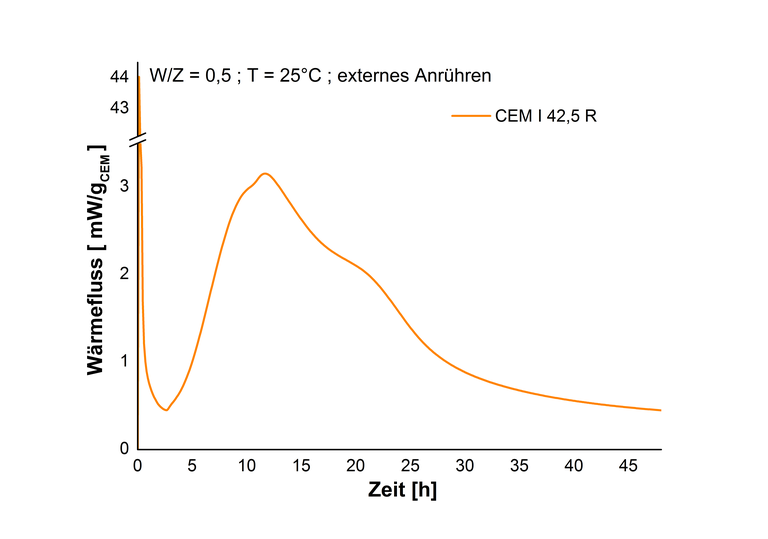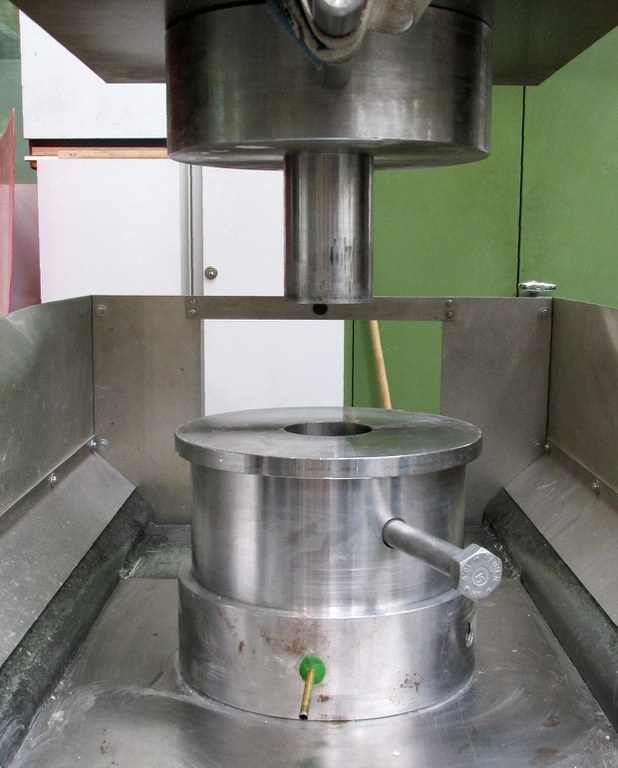Heat-flow calorimetry
Isothermal heat-flow calorimetry is a procedure which can determine the thermal ernergy released due to an exothermal phase change as a function of time. The energy released is measured in comparison with an inert reference substance and registered. It is applied in the area of construction materials for measuring the heat of hydration released by (latent) hydraulic or pozzolanic binders and for determining the impact of additives and admixtures upon the hydration.

Figure: Heat flow in the course of the hydration of a Portland cement
The isothermal heat-flow calorimeter TAM Air from TA Instruments has eight independent measuring channels with a reference cell each. The operation temperature of the calorimeter ranges from 5 °C up to 90 °C. The HDPE sample flasks in use hold a sample volume of 20 ml and permit measurements in the range from 5 °C up to 50 °C.
Investigating pore solution of binder paste and concrete
The chemical analysis of the pore solution is a decisive method for characterizing the reaction mechanism and it serves as well as a tool for describing some deterioration mechanisms in cement based construction materials. The pore solution is squeezed out of the specimens the devices shown in the figure below. The procedure is based on Longuet’s method1). At a pressure of 800 MPa in maximum the pore solution is squeezed out at a loading rate of 2 kN/s. The pore solution flows through a small tube and is collected for subsequent chemical analysis.

Figure: Squeeze-out equipment placed in a loading frame
1) Longuet, P., Burglen, L., Zelwer, A.: La phase liquide du ciment hydraté. Revue des Matériaux de Contruction 676 (1973), 35-41